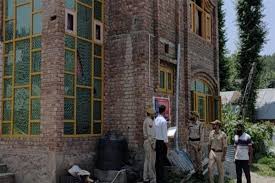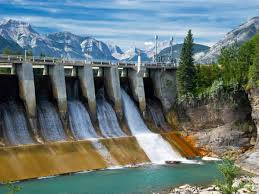The annual Kheer Bhawani Mela at the revered Mata Ragnya Devi temple in Tulmulla, Ganderbal, held on June 03, has once again emerged as a radiant symbol of Kashmir’s enduring spirit of communal harmony and shared cultural heritage. This year’s festival, marked by devotion, nostalgia and unity, saw thousands of Kashmiri Pandits and local Muslims come together in a celebration that transcended religious boundaries and rekindled the hope of reconciliation in the Valley.
A Sacred Homecoming
Set amidst the majestic Chinar trees, the Kheer Bhawani temple became the emotional epicenter for Kashmiri Pandits returning from across the country—many after decades of displacement. For these families, the festival was more than a religious observance; it was a heartfelt homecoming, a rekindling of bonds with their homeland and neighbors.
“This day is not just about rituals—it’s about rekindling old ties and healing wounds through faith and togetherness,” said Vijay Kumar, a devotee from Delhi, his voice echoing the sentiments of many who had made the journey back to their roots.
The festival’s timing on Jyeshtha Ashtami, a day dedicated to the Goddess Kheer Bhawani, holds deep spiritual significance. The sacred spring, whose waters are believed to change color with the goddess’s mood, has been a focal point of faith for centuries. This natural phenomenon continues to inspire awe and devotion among pilgrims, symbolizing the living connection between nature, divinity and the people of Kashmir.
Celebrating Communal Harmony
What made this year’s Mela especially poignant was the active participation of local Muslims, who not only assisted in organizing the festival but also set up stalls for ritual offerings and extended warm hospitality to the returning Pandits. Their involvement served as a powerful reminder of Kashmir’s centuries-old tradition of coexistence.
“We wait for this festival each year—not just to earn a livelihood, but to welcome our Pandit brothers and sisters back home,” shared Abdul Rahim, a local shopkeeper, his words reflecting the deep-seated bonds that have survived years of turmoil.
This spirit of inclusiveness was palpable throughout the festival grounds. Muslim families opened their homes to pilgrims, offering food and shelter, while local youth groups organized cultural programs celebrating Kashmir’s shared heritage. The festival became a living classroom where the younger generation witnessed firsthand the values of tolerance and friendship that have defined Kashmir’s identity.
A Festival of Faith, Food and Fellowship
The temple grounds buzzed with life as devotees offered milk and kheer to the sacred spring, performed age-old rituals, and shared meals under the shade of ancient trees. The air was filled with the aroma of traditional Kashmiri delicacies, the sounds of devotional hymns and the laughter of reunited friends and families.
Local artisans and youth groups contributed by organizing cultural performances and exhibitions, showcasing the Valley’s rich artistic heritage. Children, dressed in vibrant attire, participated in folk dances, while elders recounted stories of past Melas, passing on the legacy to younger generations.
The festival also featured workshops on traditional crafts such as papier-mâché, carpet weaving, and saffron cultivation, encouraging the preservation of Kashmir’s unique cultural arts. These initiatives not only celebrate the past but also provide avenues for economic empowerment and cultural pride among local communities.
Administration and Leadership: Ensuring a Safe, Inclusive Celebration
The district administration played a pivotal role in ensuring the smooth conduct of the event. Security forces were deployed, medical aid stations set up, and public services maintained to provide a safe and welcoming environment for all attendees. The seamless coordination between authorities and local volunteers reflected a collective commitment to peace and unity.
Political and social leaders from across the spectrum paid their respects at the shrine, reinforcing the message of inclusivity. Lieutenant Governor Manoj Sinha, National Conference president Dr. Farooq Abdullah, PDP leader Mehbooba Mufti, J&K Congress president Tariq Karra and senior BJP leaders were among those who offered prayers and extended greetings.
“Heartiest greetings to the people, especially Kashmiri Pandit brothers and sisters, on the auspicious occasion of Jyeshtha Ashtami. May the divine blessings of Mata Kheer Bhawani continue to illuminate our paths, ushering in peace, happiness and prosperity for all,” tweeted LG Sinha, encapsulating the spirit of the festival.
Rekindling Hope and Building Bridges
As the sacred spring shimmered in the sunlight, the Kheer Bhawani Mela became more than a religious gathering—it became a living testament to Kashmir’s resilience, its capacity for healing, and its longing for a future built on mutual respect and understanding.
The sight of Pandit and Muslim children playing together, elders exchanging stories, and families sharing meals evoked memories of a time when such harmony was the norm. The festival’s success this year has inspired hope that these bonds can be strengthened and that the wounds of the past can be healed through continued dialogue, empathy and shared celebration.
Inspiring Stories: Voices from the Mela
A Young Volunteer’s Dream:
Naseema, a 19-year-old student from Tulmulla, volunteered at the festival for the first time. “I want my generation to know the real Kashmir—the Kashmir of love, respect and togetherness. This festival gives us a chance to show the world that we can live as one family.”
A Pilgrim’s Prayer:
Rajesh Tickoo, who traveled from Mumbai, shared, “I brought my children here so they can see where their ancestors prayed, and so they can witness the kindness that still exists in our Valley. We leave with hearts full of gratitude and hope.”
An Elder’s Reflection:
Pandit Ramnath Kaul, a senior devotee, reflected, “Kheer Bhawani is not just a temple; it is the soul of Kashmir. Every year, when I come here, I feel the pain of separation lessen and the hope of reunion grow stronger.”
The Festival’s Wider Impact: Healing a Fractured Valley
Beyond its religious significance, the Kheer Bhawani Mela is increasingly recognized as a platform for peacebuilding and cultural revival in Kashmir. Community leaders and peace activists have lauded the festival for fostering dialogue and understanding between communities that have faced decades of conflict.
Workshops and panel discussions held alongside the festival addressed issues such as cultural preservation, youth empowerment, and conflict resolution. These conversations aim to harness the festival’s spirit to build bridges not only between communities but also between generations, ensuring that the legacy of harmony endures.
A Shared Future
As devotees departed, their spirits uplifted, the message of Kheer Bhawani Mela resonated far beyond the temple walls. It was a message of hope—a belief that, despite challenges, Kashmir’s people can reclaim their shared heritage, celebrate their diversity and build a future rooted in peace and brotherhood.
The festival stands as a shining example for the rest of the country, proving that faith and tradition, when combined with compassion and unity, can overcome even the deepest divides.
The Kheer Bhawani Mela is not just a festival—it is a promise: a promise to remember, to reunite, and to rebuild the bonds that make Kashmir truly ‘Paradise on Earth.‘






